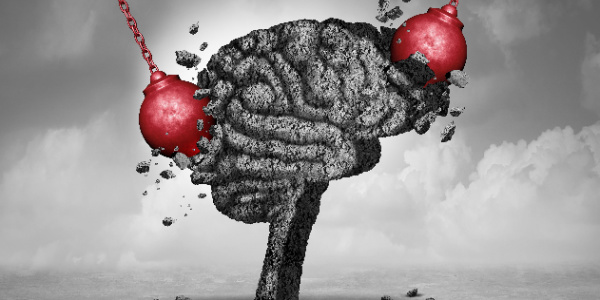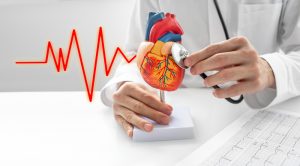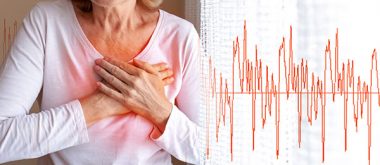Women who suffer from both migraines and hot flushes and/or night sweats have a slightly higher risk of heart disease and stroke, and young women who suffer from migraines have a higher risk of persistent menopausal symptoms later in life. This is according to two new publications based on data from a long-term study of the same group of women from adolescence to middle age.
After all, previous research suggesting such a link during and after menopause has attracted a lot of attention. However, two new studies published in the journal Menopause suggest that most of them needn’t worry so much, especially if they don’t suffer from both migraines and long-term hot flashes and night sweats. Instead, they should focus on the other factors that can increase their cardiovascular risk by getting more sleep, exercising and eating healthily, quitting smoking and watching their blood pressure, blood sugar, cholesterol levels and weight.
For women who suffer from both migraines and hot flashes or night sweats over many years, one of the new studies points to an additional cardiovascular risk. This makes the prevention of heart disease and strokes even more important in this group. And for women who currently suffer from migraines in their 20s and 30s, the new research suggests that they may be at higher risk for long-term menopausal symptoms as they age.
Hot Flashes and Migraines, and the Link to Heart Disease
Kim and her colleagues at Michigan Medicine, U-M’s academic medical center, published the new pair of studies based on an in-depth analysis of data from a long-term study of more than 1,900 women who voluntarily underwent regular medical exams and blood tests and participated in annual health surveys in their late teens to early 30s. These women, now in their 50s and 60s, have provided researchers with invaluable insight into the factors that influence health in the years leading up to menopause and beyond through their continued participation in the CARDIA study. The fears and anxieties that women with migraines and menopausal symptoms have about cardiovascular risk are real – but these findings suggest that a focus on prevention and correcting unhealthy habits and risk factors could help most women. For the subgroup who suffer from both migraines and early, persistent hot flashes and night sweats, as well as those who suffer from migraines in early adulthood, these findings point to the need to control risks and address symptoms early.
Just over 30% of the middle-aged women taking part in the study reported suffering from persistent hot flushes and night sweats, collectively known as vasomotor symptoms or VMS, as they are related to changes in the diameter of blood vessels, of which 23% also reported suffering from migraines. This was the only group in which Kim and her colleagues found an additional risk of stroke, heart attack or other cardiovascular events that could not be explained by other risk factors that have long been known to be associated with cardiovascular problems.
In addition to women with persistent vasomotor symptoms occurring in their 40s or earlier, 43% of women in the study had minimal symptoms in their 50s, and 27% had VMS that increased over time into their 50s and early 60s. The latter two groups had no increased cardiovascular risk when their other risk factors were taken into account, regardless of whether or not they suffered from migraine. The use of hormone supplements for birth control and estrogen to treat medical problems had no effect on this risk.
In the study using data from the same women earlier in their lives, the researchers found that migraines, depression and cigarette smoking, as well as being black or having less than a high school diploma, were the most important factors in predicting which women would later suffer from persistent hot flashes and night sweats. Taken together, the researchers say these two studies underscore that not all women have the same experiences as they grow older, and that many can control the risk factors that could increase their risk of heart disease and stroke later in life.
Other Factors that Increase Cardiovascular Risk
The long-term study from which the two new findings originate was specifically designed to investigate cardiovascular risks when it was launched in the mid-1980s. CARDIA stands for Coronary Artery Risk Development in Young Adults. In the 1980s, knowledge about the biology of blood vessels, right down to the cellular and molecular level, was nowhere near as extensive as it is today. Both menopausal vasomotor symptoms and migraines are related to the contraction and dilation of blood vessels. However, decades of research have shown the microscopic effects on blood vessels of years of smoking, poor sleep, poor eating habits and lack of exercise, as well as a person’s genetic predisposition, life experiences and hormonal history. In recent years, newer injectable migraine medications, known as calcitonin gene-related peptide antagonists (CGRP), have come onto the market. Using monoclonal antibodies, they target a key receptor on the surface of blood vessel cells to prevent migraine and cluster headaches. But these are expensive.
Although the new study is based on data from before these drugs were available, Kim recommends them to her patients with persistent migraines and works with them to figure out what triggers their migraines and how to prevent them with other medications such as painkillers and anti-seizure medications. She also notes that the study on the future risk of persistent hot flashes and night sweats reflects the recent trend to alleviate these effects of menopause with antidepressants.
Kim also points out that the importance of healthy sleep habits in reducing hot flashes has become increasingly clear, as well as the short-term use of estradiol-based hormone patches, which have not been shown to be associated with cardiovascular risk. She also points out that research has not shown that over-the-counter supplements or herbal remedies are effective, and that these are far less regulated than drugs.







